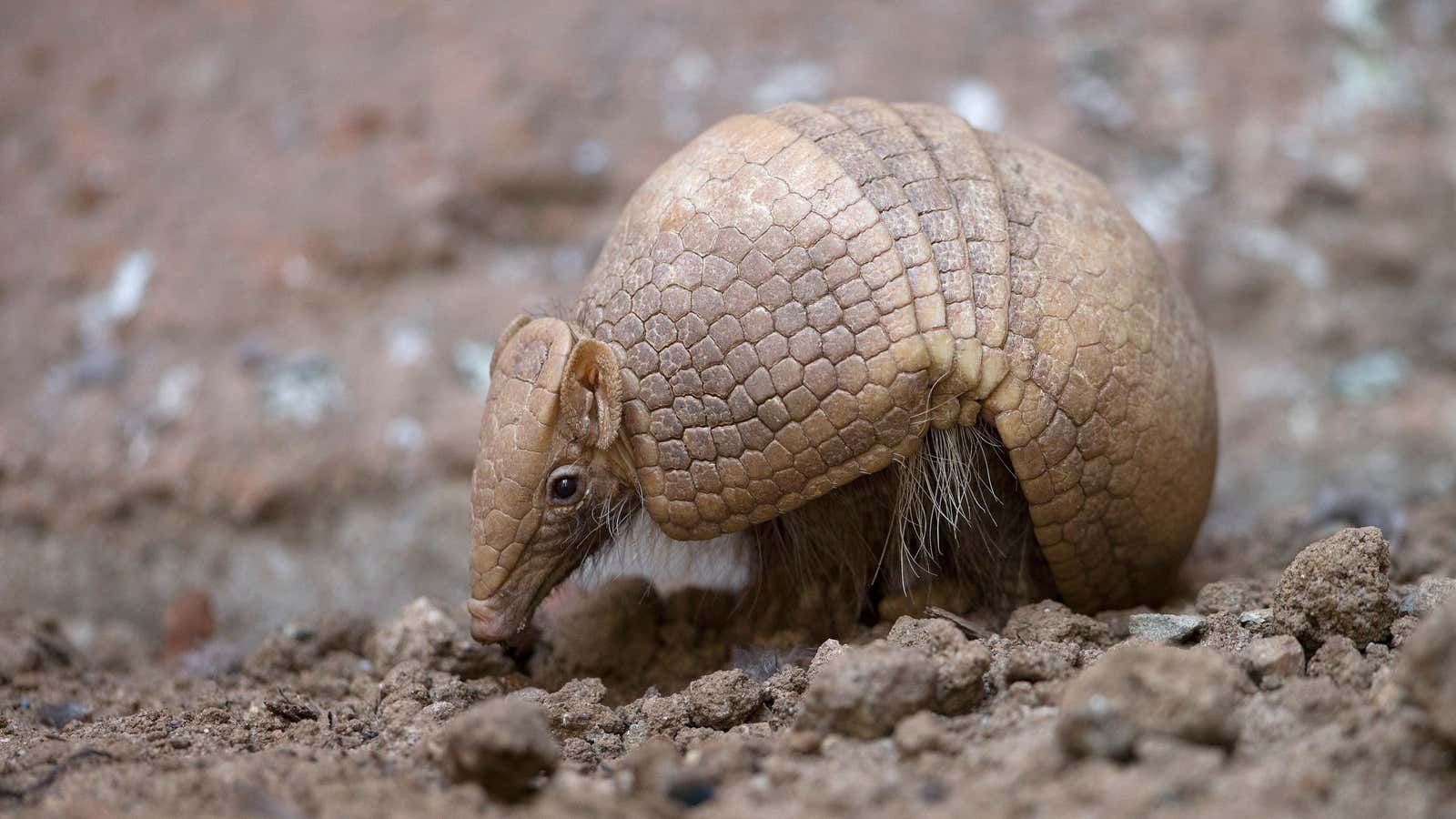Leprosy, also known as Hansen’s disease, is one of those illnesses we don’t hear about much anymore. Around 90% of the population (paywall) is actually immune to the skin and nerve-damaging bacterial infection, and leprosy is both curable with antibiotics and rarely fatal. Although the disease is still endemic in parts of the world, according to the World Health Organization, there were only about 216,000 reported cases last year. For perspective, the flu kills between 300,000 and 650,000 people every year, and infects hundreds of thousands more.
But some parts of the world are outliers: Brazil is the one country where leprosy rates are higher than one case per 10,000 people. Tens of thousands of cases are reported annually there, and these figures likely understate the actual prevalence of the disease. That’s because most people in Brazil who wind up with these infections live in rural areas, where access to healthcare is limited. Plus, it can take years for Mycobacterium leprae, the bacteria that causes the illness, to reach a state where a person experiences symptoms. In other words, most people are unaware they’ve contracted the bacteria, and even if they did, they may not be able to seek treatment.
Leprosy can be transmitted from person to person through tiny water droplets in the air, and typically spreads among people who live in close contact with one another for long periods of time, like families. Typically, though, it takes years of living with someone with an infection for anyone to contract the disease in this way. A much quicker way to contract M. leprae is by having an appetite for armadillo.
A study published today (June 28) in the journal PLOS Neglected Tropical Diseases estimates that over 60% of the armadillos scurrying around Brazilian forests carry M. leprae and frequently transmit it to the people living there, who eat it as a source of protein. “Armadillos are kind of a delicacy—think about it like lobster,” says John Spencer, an immunologist who has researched leprosy for years at Colorado State University and led the study.
They’re also ideal hosts for M. leprae. These bacteria thrive at a specific temperature—34°C (93°F)—which happens to be the internal core body temperature of armadillos. M. leprae invades the cells in armadillos’ bodies, and uses them as a place to feed and replicate. The bacteria don’t produce toxins, so the armadillo doesn’t get sick right away (nor would any other host). Instead, the bacteria reproduce and reproduce; after about a year, the sheer number of M. leprae cells kill the creature.
Humans aren’t the best host for M. leprae, since our core body temperature is higher, at 37°C (98°F). Still, the bacteria can survive in our skin cells, which are cooler, and in our nerve cells, because M. leprae, for still-unknown reasons, has a unique ability to bind to nerve cells. It takes longer for copies to replicate in these conditions, which is why it can take years to develop symptoms, like the telltale skin lesions, or pain or loss of sensation in the fingers, toes, or joints.
Spencer and his team traveled to a small village in Pará, Brazil (a large state in the northeast part of the country) and analyzed blood samples of the 146 people living there to see if anyone was infected with M. leprae. They also asked the villagers about their contact with armadillos, and took blood samples from 16 different armadillos that had been caught by the villagers for food.
The team found that most of the armadillos were infected with M. leprae, as were 65% of people who reported eating the animal more than once a month. (They gave free treatment to anyone found to have the infection.) Hunting armadillos also appeared to be a risk factor for carrying the disease, likely because hunters are exposed to armadillo blood, Spencer says.
Cooking armadillo meat kills off any M. leprae bacteria, but in this part of Brazil, many like to eat the animal’s liver—one of the main sites of the bacteria—raw as part of a ceviche dish. Spencer’s team also found that some families would catch armadillos live and keep them in their homes to fatten them up before eating, which would also increase the likelihood of transmission between them.
Spencer estimates in some isolated, rural regions of Brazil, as many as 4% of people may have infections with M. leprae. That translates to about 400 cases per 10,000 people, much higher than the current statistics. “We’re trying to impress on the Brazil government that they need more resources to combat this problem,” Spencer says.
The Brazilian government has already made it illegal to hunt armadillos for food, but the people living in some of these remote regions rely on the animals for protein. “It’s a social, cultural thing—they’ve been doing this for generations. They like to eat armadillo, and it won’t change their behavior,” Spencer says.
A more effective approach would be focusing on reaching out to these communities proactively to ensure everyone is properly treated. Hansen’s disease can be cured with antibiotics, and, if caught early, doesn’t leave any permanent damage. Plus, actually visiting these communities would give public health workers a chance to remind people that if they are going to eat armadillo, they should cook it thoroughly.
